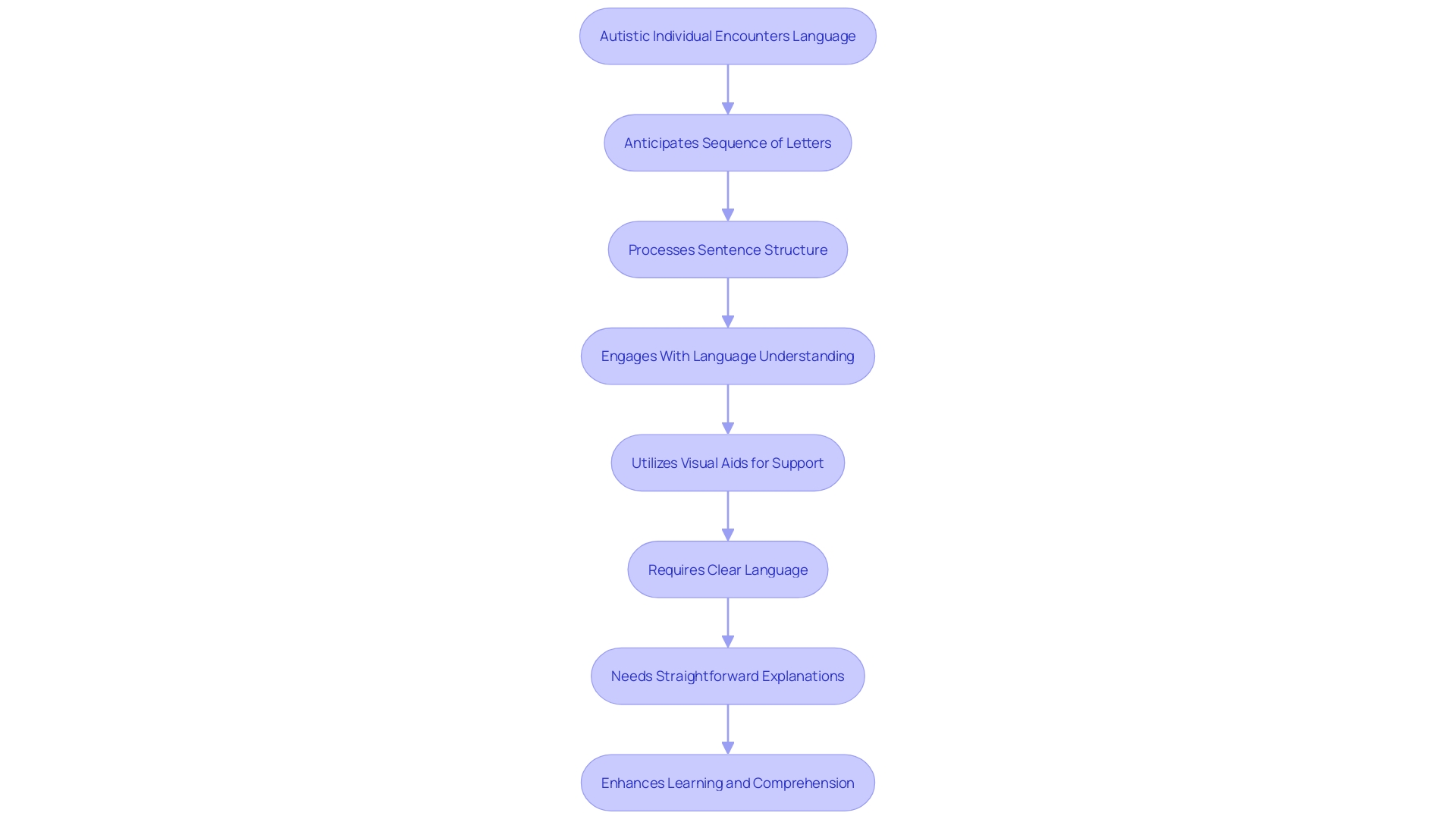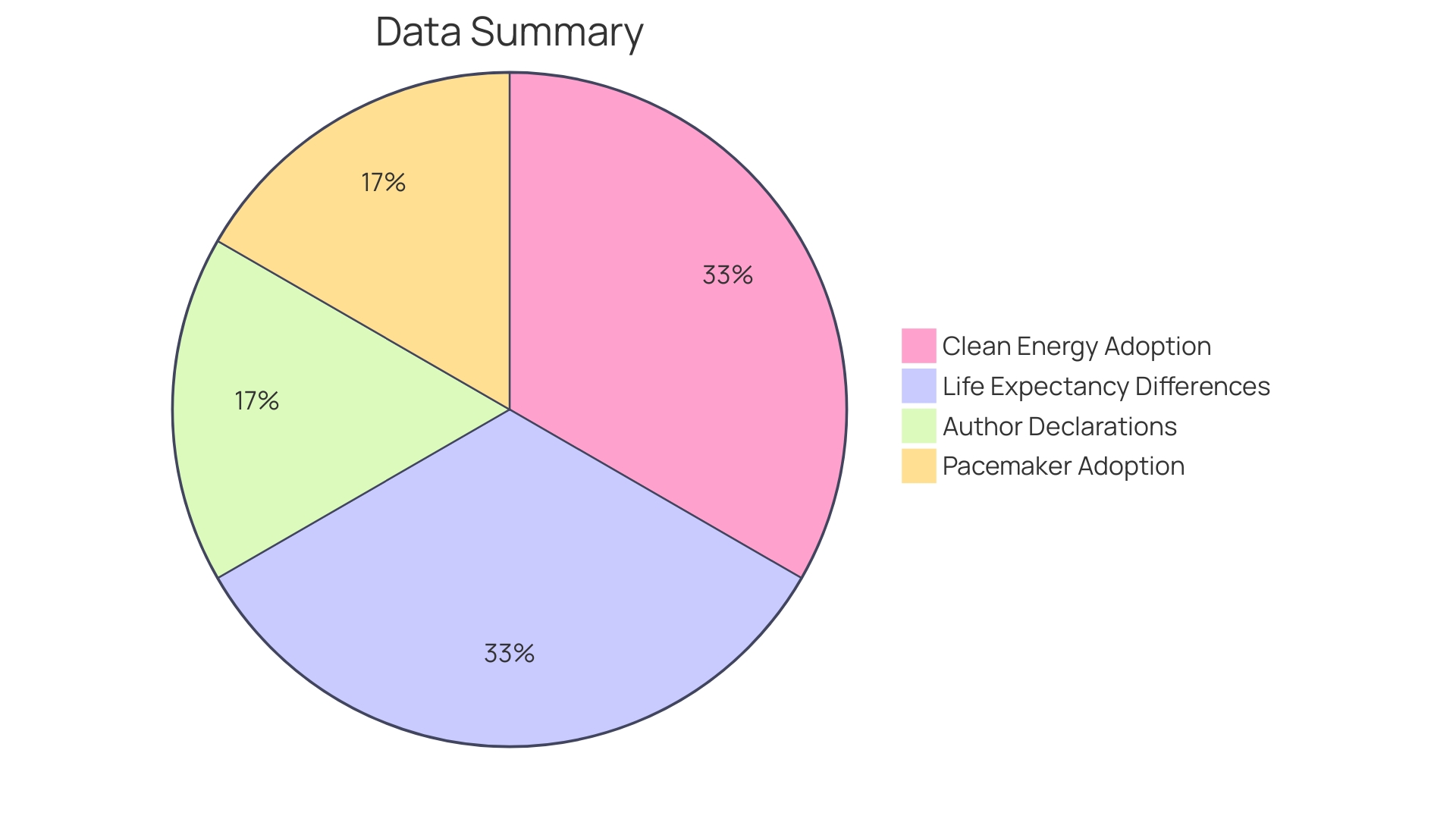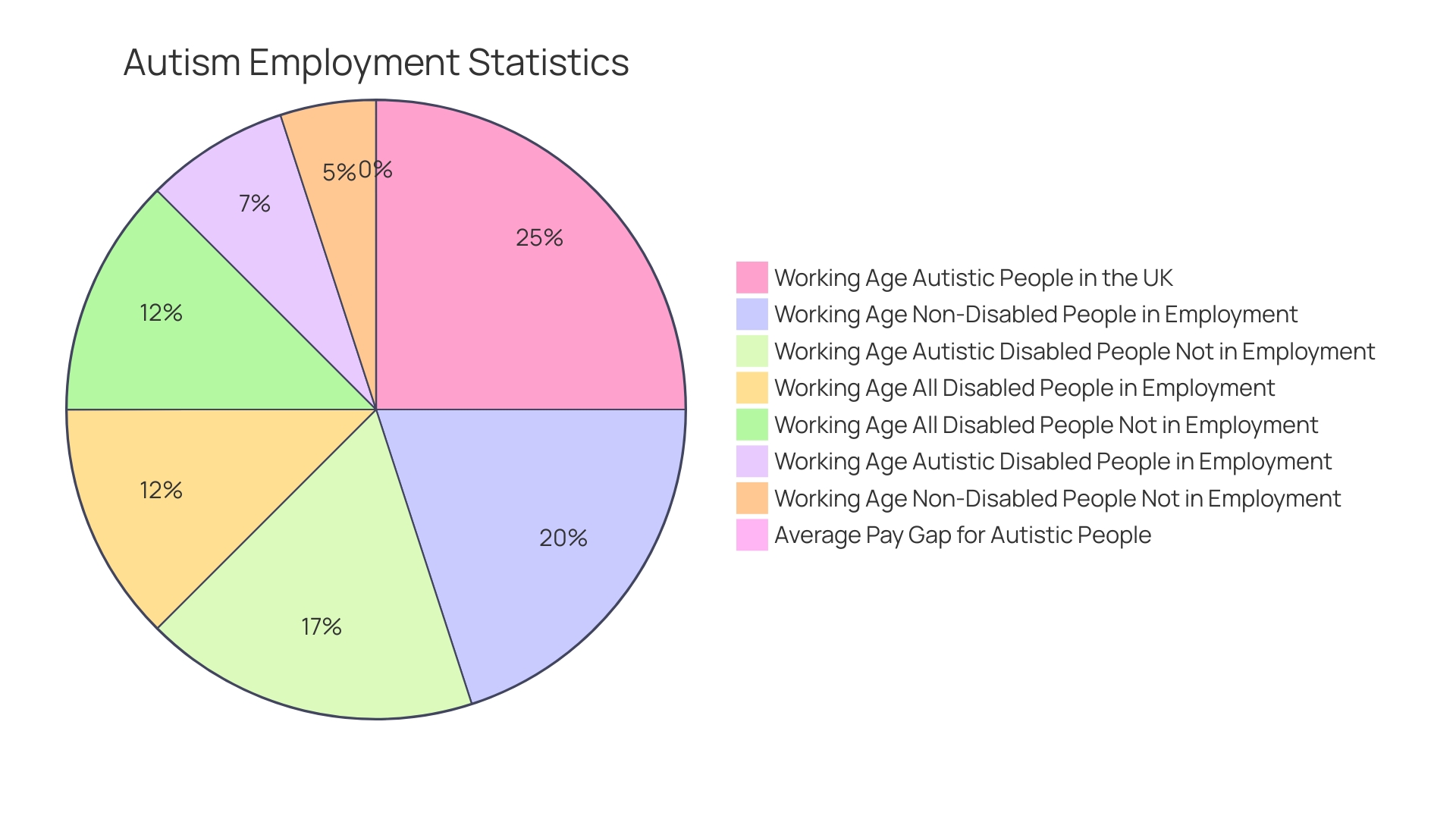Introduction
Autism Spectrum Disorder (ASD) is a complex neurodevelopmental condition that affects communication, behavior, and social interaction. Its diverse range of symptoms and abilities transcend ethnic, racial, and socioeconomic boundaries. Despite the absence of a cure, understanding the intricacies of this spectrum is crucial for fostering acceptance and tailoring support.
This article explores various aspects of autism, from the core defining features and cognitive profiles to decoding comprehension and emotional challenges. Strategies for understanding and supporting individuals with autism, as well as building emotional connections and promoting empathy, are also discussed. By creating an inclusive and supportive environment, we can empower individuals with autism to thrive and contribute to society.
Understanding Autism: The Core Defining Features
Autism Spectrum Disorder (ASD) is a complex neurodevelopmental condition that manifests in a multitude of ways, affecting communication, behavior, and social interaction. With a vast range of symptoms, abilities, and skills, ASD is a spectrum that reveals itself across all ethnic, racial, and socioeconomic boundaries. The DSM-5, a critical manual for diagnosing mental disorders, notes that individuals with ASD might not only struggle with communication but may also exhibit a communication style that's distinct from others, which can influence their social functioning in various life domains.
Moreover, the societal perception of individuals with ASD and their families can often be affected negatively.
Despite there being no cure for ASD, understanding the intricacies of this spectrum is key to fostering acceptance and tailoring support. This knowledge is vital not only for those directly interacting with someone with autism—such as family, friends, teachers, and coworkers—but also for society at large. The International Classification of Diseases (ICD-11) acknowledges the diversity within ASD diagnoses, suggesting a range of potential characteristics rather than a fixed set, thereby emphasizing the individual nature of the disorder.
Research on ASD has traditionally been focused on Western populations, but recent studies are expanding our understanding globally. The Interagency Autism Coordinating Committee (IACC) strives to enhance autism research and services coordination, working closely with various stakeholders, including autistic individuals and their families. Through their collective expertise, the IACC contributes to a more nuanced view of ASD, moving beyond Western-centric perspectives.
In the realm of social communication, research into the nuances of genuine and posed smiles sheds light on the complexities of interpreting social cues—a challenge often faced by individuals with ASD. Understanding these differences is a step towards appreciating the diverse ways in which people with ASD may perceive and engage with the world around them.
Indeed, the journey towards a deeper understanding of ASD is ongoing, with the goal of supporting those affected by it in living fulfilling lives, underscored by a commitment to research, inclusivity, and advocacy.
Cognitive and Language Profiles in Autism
Autism Spectrum Disorder (ASD) presents unique cognitive and linguistic landscapes for each individual. The neurodevelopmental condition, which affects social interaction, communication, and behavior, often comes with particular strengths. For instance, many autistic individuals exhibit remarkable abilities in visual processing, attention to detail, and pattern recognition.
These skills can be advantageous in various contexts, from solving complex problems to creating art.
However, alongside these strengths, individuals with autism may face challenges in executive functioning, which includes planning and organization, as well as in abstract thinking and flexible problem-solving. These challenges can impact daily functioning and the ability to adapt to new or unexpected situations. Language development in autism is equally diverse, with some individuals being nonverbal, while others may have advanced language skills.
This variability underscores the importance of personalized support strategies that address the specific needs and abilities of each person with autism.
Recent studies highlight the role of inner speech (IS) in cognitive development for individuals with ASD. Inner speech is a critical component of working memory and is involved in tasks that require rehearsal within the phonological loop, aiding memory and abstract thinking. For autistic individuals, the development of inner speech can be instrumental in enhancing cognitive functions, such as flexible thinking and task management.
Moreover, groundbreaking research using machine learning has shown promising results in early identification of autism. By analyzing 28 different parameters, such as the age of first smile or the presence of eating difficulties, researchers have developed a model, named 'AutMedAI', which can identify approximately 80% of children with autism before the age of two. This early identification is crucial as it allows for timely interventions, which can significantly improve the quality of life for autistic individuals and their families.
The intersection of autism with bilingualism has also been explored, revealing that the previously held belief that bilingualism might confuse or hinder cognitive development in autistic children is unfounded. In fact, evidence suggests that bilingualism can have positive effects on cognition and executive function skills, and does not negatively impact language development. This is a critical insight for practitioners and educators, as it encourages the support of cultural and linguistic identity in bilingual families, enhancing communication and social inclusion.
Understanding the cognitive and language profiles of individuals with autism is not just a scientific endeavor but a pathway to more effective, personalized support, fostering the well-being and potential of each individual. The complexity of autism necessitates a nuanced approach to intervention, where the diversity of each person's experiences and abilities is acknowledged and celebrated.
Decoding and Comprehension in Autism
Autistic individuals often excel at processing visual information and understanding literal language but may find abstract concepts, sarcasm, and nonverbal cues more challenging. Recent studies, such as the one led by Professor Vikram Jaswal at the University of Virginia, have shed light on the literacy capabilities of nonspeaking autistic people. Using an innovative method akin to the game Whac-a-Mole, researchers discovered that these individuals could anticipate the sequence of letters in sentences they had previously heard, challenging the assumption that nonspeaking autistics lack language capacity.
This finding underscores the importance of recognizing the diverse ways in which autistic individuals can engage with language and literacy.
To support their learning and comprehension, it is crucial to utilize visual aids, clear language, and straightforward explanations. Such strategies not only cater to their strengths but also bridge communication gaps. By acknowledging the unique learning profiles of autistic individuals, we can enhance our approach to education and interaction, ensuring that every individual has the opportunity to thrive.

Emotional Experience and Challenges in Autism
Autism Spectrum Disorder (ASD) presents a complex array of behavioral, social, and communicative challenges that vary widely across individuals. A key aspect of ASD is the unique way individuals process and express emotions. Often, people with autism may struggle to recognize and articulate their feelings, making it challenging for them to form deep connections with others.
These emotional processing difficulties can also make it hard for them to interpret emotional cues from others, which is essential for developing empathy and maintaining relationships.
Emotional well-being in autism requires a nurturing environment that promotes emotional expression and equips individuals with strategies for emotional regulation. For example, the concept of 'emotion mimicry' allows individuals with autism to learn and imitate facial expressions associated with different emotions, which can aid in social interactions. Additionally, understanding the 'Wheel of Emotions' can provide insights into the primary and secondary emotions, helping both individuals with autism and those around them to better navigate the emotional landscape.
Recent research underscores the importance of addressing these emotional challenges. Dr. Temple Grandin, an autism advocate, emphasizes that people on the spectrum do experience empathy but might express it differently, akin to 'a passing thunderstorm,' focusing on living in the present. Such insights are vital in debunking myths around autism and empathy.
Furthermore, the pressures of adapting to a world designed for neurotypical individuals can lead to immense stress for those with autism. This stress can be exacerbated by the 'bottom-up processing style' often associated with ASD, where sensory and social information can become overwhelming. However, with proper support, individuals with autism can not only manage but also thrive.
It is critical to recognize that supporting the emotional needs of individuals with autism is not only about improving their quality of life but also about acknowledging their inherent worth and dignity. As one advocate poignantly stated, 'You are not a burden. You are a human being, and your life can be rich, full, complete, fulfilling, and meaningful on that basis alone.'
By fostering an environment that addresses the emotional nuances of autism, we can contribute to a more inclusive and empathetic society.
Strategies for Understanding and Supporting Individuals with Autism
Autism, a complex neurodevelopmental condition, reflects a spectrum of challenges and strengths that vary from one individual to another. Tailoring support to each person's unique profile is crucial. It starts with educating oneself about autism, its manifestations, and the specific needs of the individual.
This foundational knowledge equips one to interact with understanding and empathy.
Personalized support recognizes the individuality of each person with autism. Interventions should be customized to amplify their strengths and assist with their challenges. Communication strategies need to be clear, supplemented by visual aids and assistive technologies to promote comprehension.
Sensory sensitivities are common in autism, and environments should be adapted to meet these needs, fostering comfort and reducing sensory overload. Social skills development is another key area, where structured activities and interventions can provide vital opportunities for learning and interaction.
Collaboration with professionals—therapists, educators, and others—is essential to create comprehensive support plans. This ensures consistency and continuity in support across different environments, empowering individuals with autism to reach their full potential.
Understanding the broader implications of autism in society underscores the importance of these strategies. Research indicates a shift towards greater appreciation for neurodiversity, with initiatives like the National Geospatial-Intelligence Agency's neurodiversity pilot highlighting the unique contributions of autistic individuals in the workplace.
Statistics reflect the urgent need for action, with only around 30% of working-age autistic individuals employed, despite the majority desiring to work. Furthermore, autistic individuals face significant pay disparities. This highlights the necessity for targeted efforts to improve employment opportunities and conditions for autistic people.
Inclusive employment practices not only benefit individuals but also the economy. Companies that employ people with disabilities, including those who are neurodiverse, tend to see higher revenue and profit margins, and a more positive work environment. This reinforces the value of understanding and supporting individuals with autism, both on a personal level and within the broader socio-economic context.

Building Emotional Connections and Promoting Empathy
Fostering emotional connections and cultivating empathy are vital for individuals with autism to form meaningful relationships and successfully interact within social contexts. Here are some practical strategies to enhance these skills:
-
Create a Safe Space for Emotional Expression: It's crucial to provide environments where individuals with autism can comfortably share their feelings without judgment. This approach affirms their emotional experiences and promotes open communication.
-
Expand Emotional Vocabulary: Assisting individuals with autism in recognizing and naming their emotions, along with understanding others' feelings, is key. Recognizing emotions like happiness, sadness, anger, and surprise helps in better emotional communication.
-
Demonstrate and Encourage Empathy: By showing empathy in daily interactions with individuals with autism, we can inspire them to empathize with others. Encouraging them to imagine vividly how others feel can deepen their emotional understanding and responsiveness.
-
Utilize Social Stories and Role-Playing: Engaging in social stories and simulated scenarios allows individuals with autism to navigate social complexities and rehearse emotional responses in a controlled setting, preparing them for real-life interactions.
Integrating these strategies can significantly aid individuals with autism in building stronger emotional ties and developing empathy, enabling them to foster deeper and more rewarding relationships.
Creating an Inclusive and Supportive Environment
Autism is a diverse and multifaceted neurodevelopmental condition that affects individuals in unique ways, particularly in social communication and behavior. To support those with autism, it's imperative to cultivate an environment that embraces their needs and fosters their potential. Here's how to achieve that:
-
Embrace Neurodiversity: Recognize and appreciate the differences in how individuals with autism experience the world. As Dr. Temple Grandin advises, it's crucial to create spaces that account for sensory sensitivities, such as using non-flickering LED lights, to ensure comfort and productivity.
-
Tailor Accommodations: Personalize support by incorporating tools that aid learning and interaction. This could range from visual schedules for better organization to creating quiet areas for those who may become easily overwhelmed by sensory stimuli. By experimenting with various approaches, the best methods to support each individual can be discovered.
-
Community Engagement: Raise autism awareness and promote inclusion within the broader community. Initiatives like NeuroTech showcase the importance of specialized education that supports both academic and personal growth in a sensory-friendly environment. By collaborating with various stakeholders, we can build a society that's more accepting and accommodating.
-
Build Support Networks: Connect with others who share similar experiences through groups and organizations dedicated to autism advocacy. These networks are invaluable for exchanging resources and fostering a sense of solidarity among parents, caregivers, and individuals with autism.
Statistics underscore the urgency for inclusion, revealing that only about 3 in 10 working-age autistic individuals are employed, despite many possessing the skills and desire to work. By fostering an inclusive culture, we not only enable individuals with autism to contribute to society but also harness their unique talents for the betterment of communities and the economy as a whole.

Conclusion
In conclusion, Autism Spectrum Disorder (ASD) is a complex neurodevelopmental condition that affects communication, behavior, and social interaction. Understanding and tailoring support for individuals with autism is crucial for fostering acceptance and empowering them to thrive.
Key aspects of autism include diverse cognitive and language profiles, requiring personalized support strategies. Early identification through machine learning and debunking myths around bilingualism in autism contribute to effective support. Clear communication strategies and visual aids enhance decoding and comprehension in autism.
Supporting the emotional needs of individuals with autism is essential for their well-being and potential. Creating an inclusive and supportive environment that embraces neurodiversity is crucial. Building emotional connections and promoting empathy through safe spaces, expanding emotional vocabulary, and utilizing social stories and role-playing are practical strategies.
Creating an inclusive environment for individuals with autism involves embracing neurodiversity, tailoring accommodations, engaging with the community, and building support networks. By recognizing their unique experiences and appreciating their talents, we can empower individuals with autism to thrive and contribute to society.
In summary, understanding and supporting individuals with autism requires personalized strategies, emotional support, and an inclusive environment. By fostering acceptance, providing tailored support, and promoting empathy, we can empower individuals with autism to thrive and contribute their unique talents.




